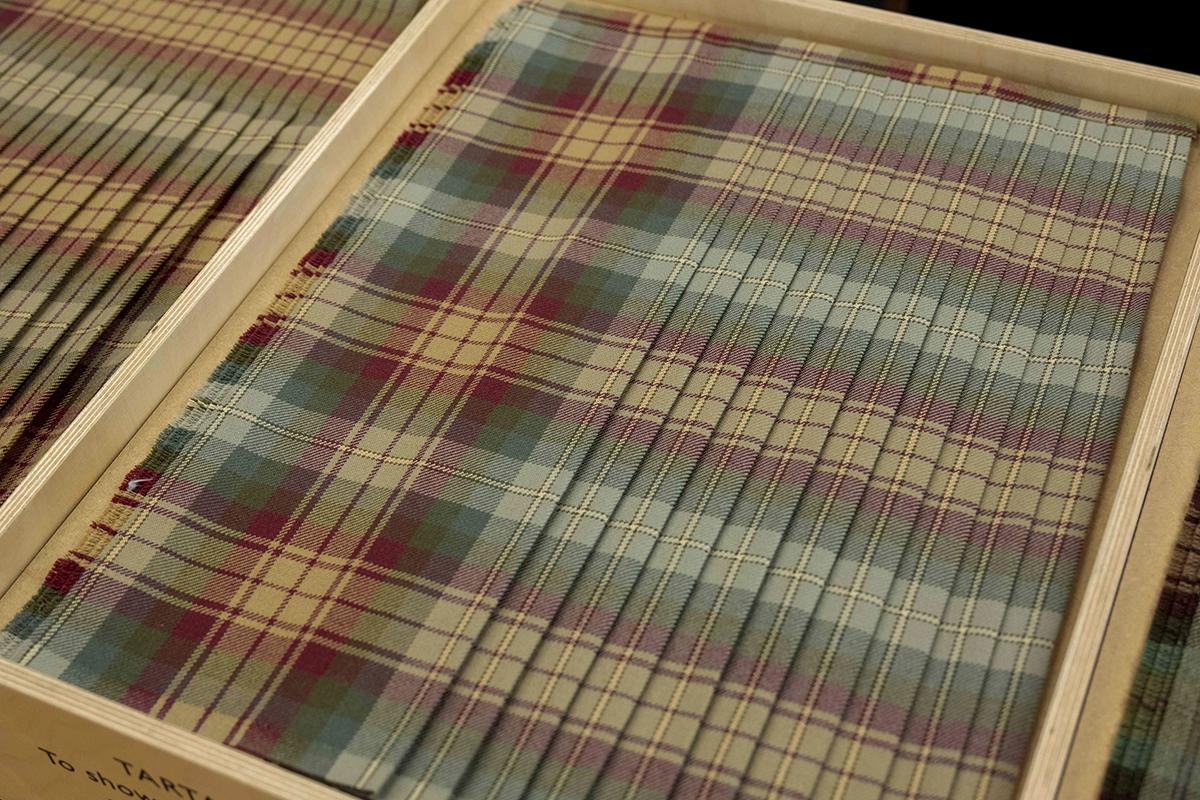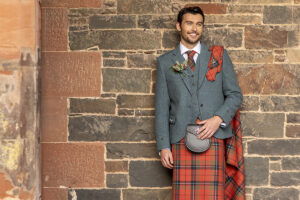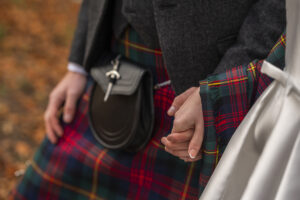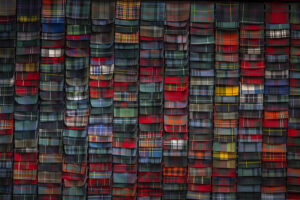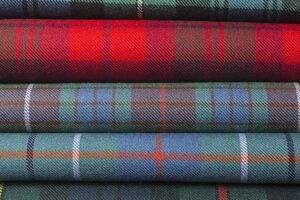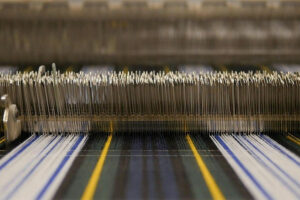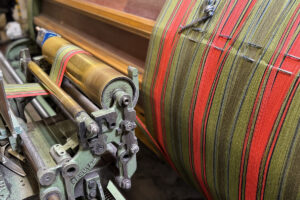The Difference Between Pleating a Kilt To Sett or To Stripe
Kilts can be pleated to either the sett or the stripe. The pleats showcase the tartan pattern and the type of kilt pleating you choose can greatly impact the final appearance of your highland wear outfit. If you are unsure of the difference between these two styles of pleating, finding it difficult to choose or even picturing how your kilt would look, we have created this guide exploring the two techniques. Each method has its appeal, so it is important to consider the occasion you would wear your kilt (such as a wedding) and the preferred look you desire for your kilt.
Pleating To Sett
The ‘sett’ refers to the order and number of coloured threads that make up the repeating pattern in the tartan fabric. Each woven tartan has a different sett, giving each tartan design a distinctive appearance. Pleating your kilt to sett involves folding the pleats so the pattern aligns seamlessly throughout, matching the tartan sett. This creates a continuous pattern appearance across the kilt, therefore the design should look the same in the front as the back.
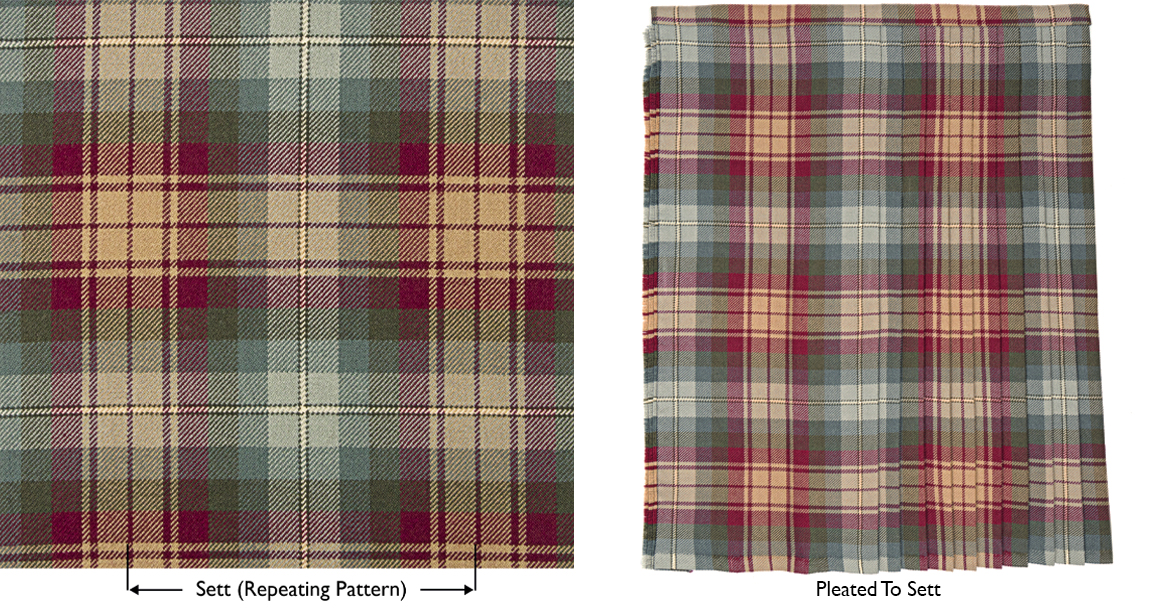
To sett is the traditional and most common way to pleat the kilt and is typically worn in this style by the public. This method creates a classic and timeless appearance, showing off the unique design of the tartan. It is ideal for formal events but also creates a versatile look that is suitable to be worn casually.
However, this method takes more time and fabric to produce, in comparison with to stripe, as the kiltmaker must match the method tartan pattern precisely with each pleat. As each sett in every tartan is different, the size of the pattern depends on the chosen tartan, which in turn affects the number of pleats. The average kilt requires between 25 – 34 pleats and the kiltmaker should be able to determine the correct amount for each kilt. If there are too few or too many extra pleats this could ruin the look of the kilt.
Pleating To Stripe
The second pleating method is to stripe which involves pleating the kilt in such a way that a vertical stripe in the pattern is running down the centre of the length of the pleat. This is usually the most prominent stripe in the design, however, any vertical stripe in the pattern of any width or colour can be the focus. These can be spaced out evenly or irregularly. Unlike to sett, this method will leave the front of your kilt looking distinctively different from the back.
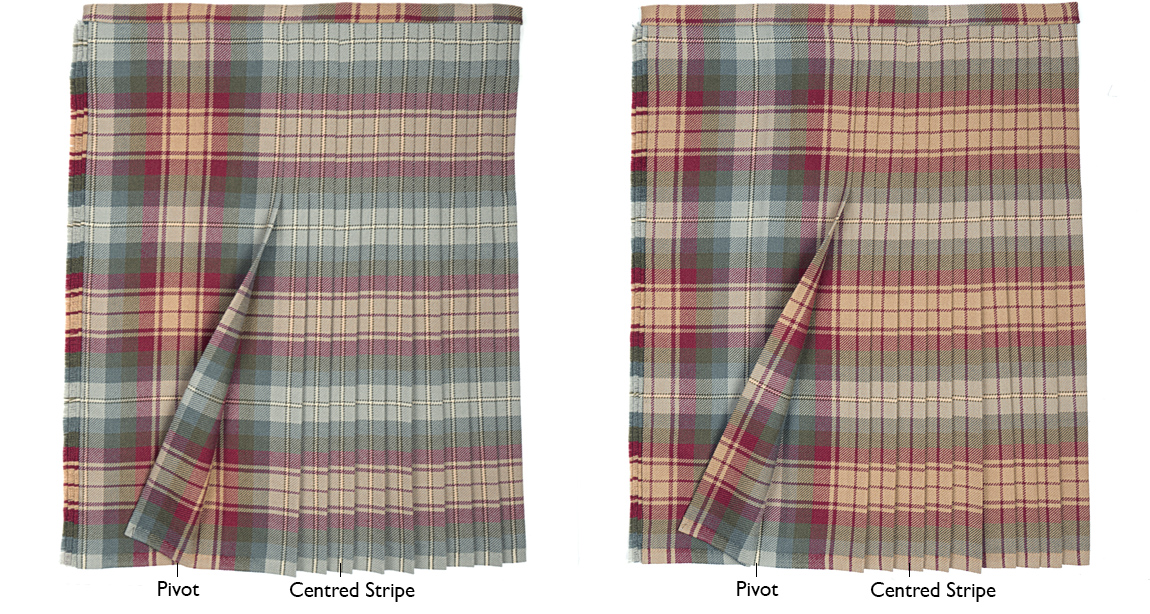
Another stripe in the tartan sett is used as a pivot for the pleat fold with the highlighted stripe centred in the pleating. This helps with accuracy and effectiveness when a kilt is pleated to stripe.
It is important to note that not all tartans suit the to stripe appearance, so ensure you choose your tartan first and then decide which pleating method you prefer. Likewise, what stripe you choose to highlight in the pleated folds can drastically impact the appearance of the kilt and the colours that will be emphasised in the back. This can be true for varying stripes from the same tartan! We have a few examples from an Auld Scotland tartan kilt showing the difference in appearance depending on the stripe centred in the pleats.
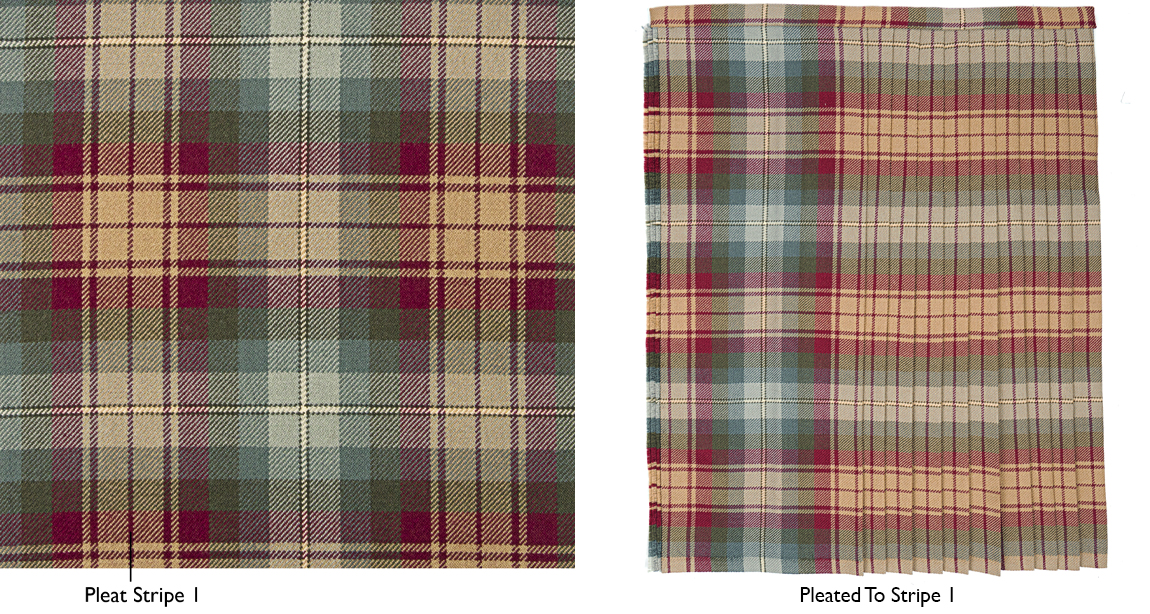

The main advantage of pleating your kilt to stripe is that it creates a bold and striking look, incorporating a modern take on the traditional kilt design. Generally, kilts pleated to stripe would be worn in military kilts due to the uniform appearance of the stripe. However, it is your personal preference how you decide to have your kilt pleated, and both techniques are equally acceptable methods.
We hope this guide on pleating to sett and to stripe helped you understand the difference and can make a more informed decision regarding what style you want for your kilt. No matter which method you choose, wearing this sophisticated, traditional garment with such a rich heritage will leave you looking and feeling amazing on any occasion you decide to don your kilt outfit.
Ready to take the next step? Have a look at our selection of kilts! At Lochcarron of Scotland we offer the option for either pleating to sett or to stripe for kilts made from our Medium Weight Braeriach fabric or our Heavy Weight Strome cloth. If you need more help with your kilt our team are happy to assist you with any questions.
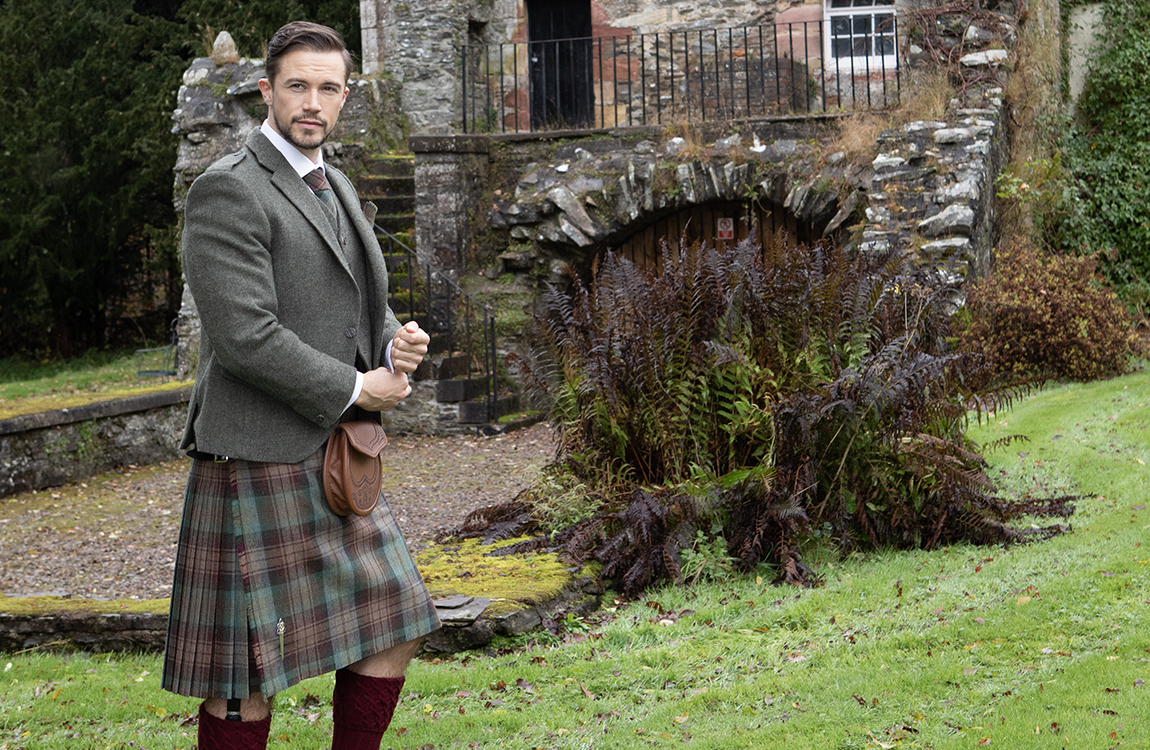
Auld Scotland Tweed Kilt Pleated to Sett

